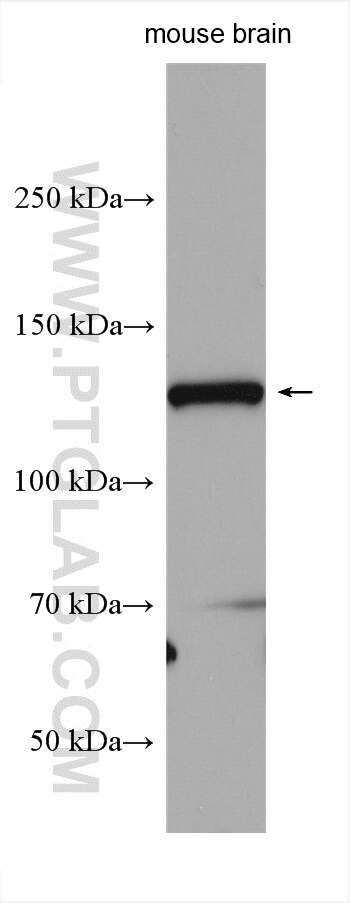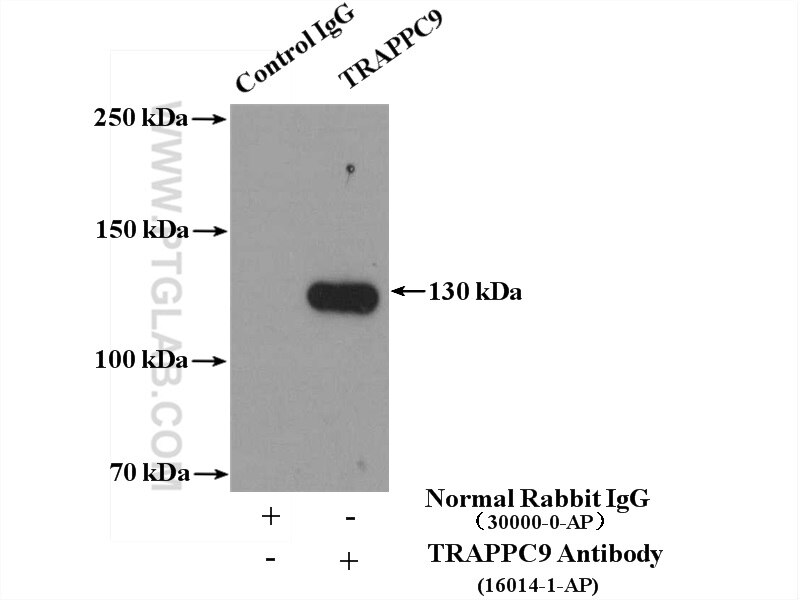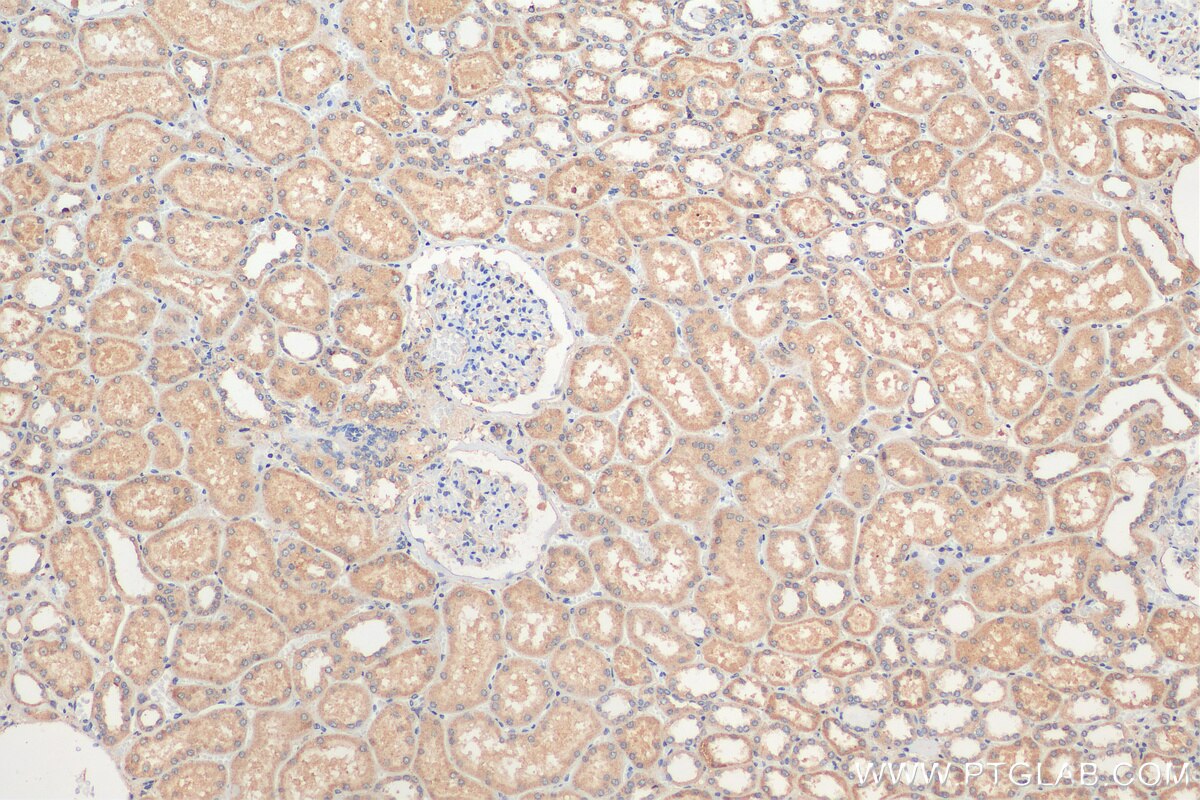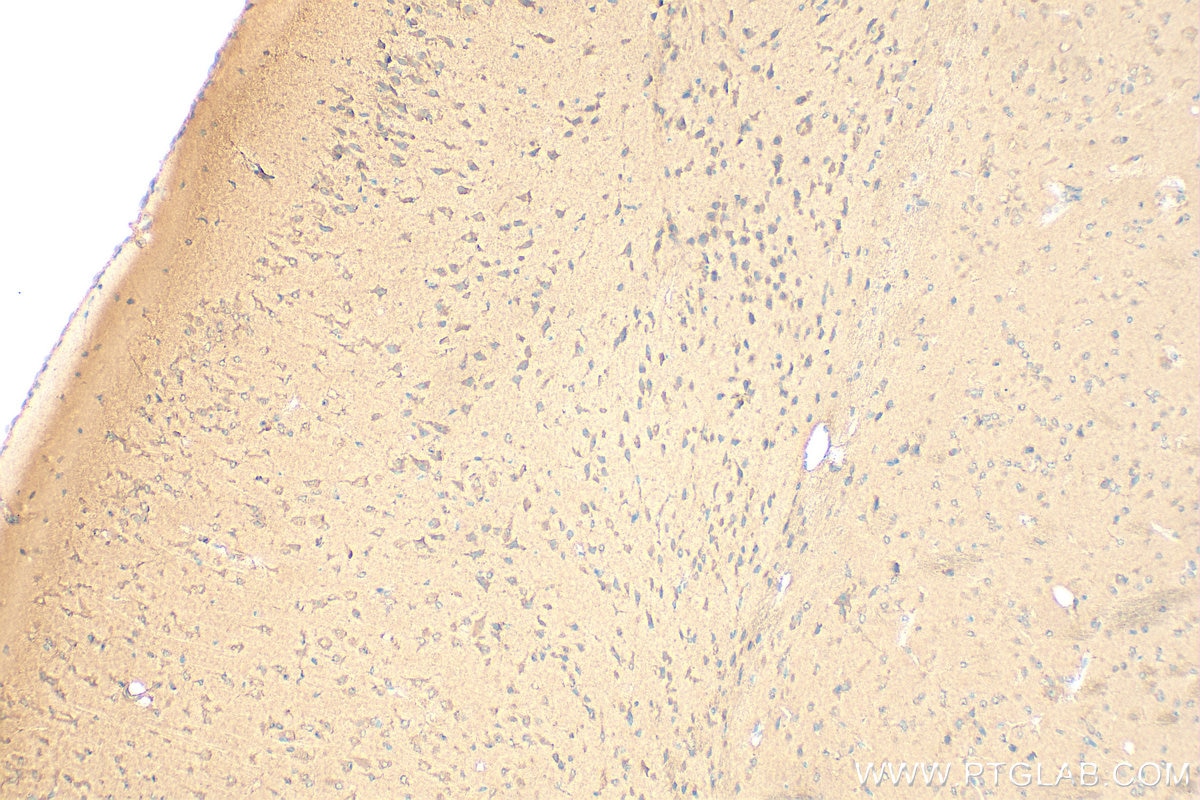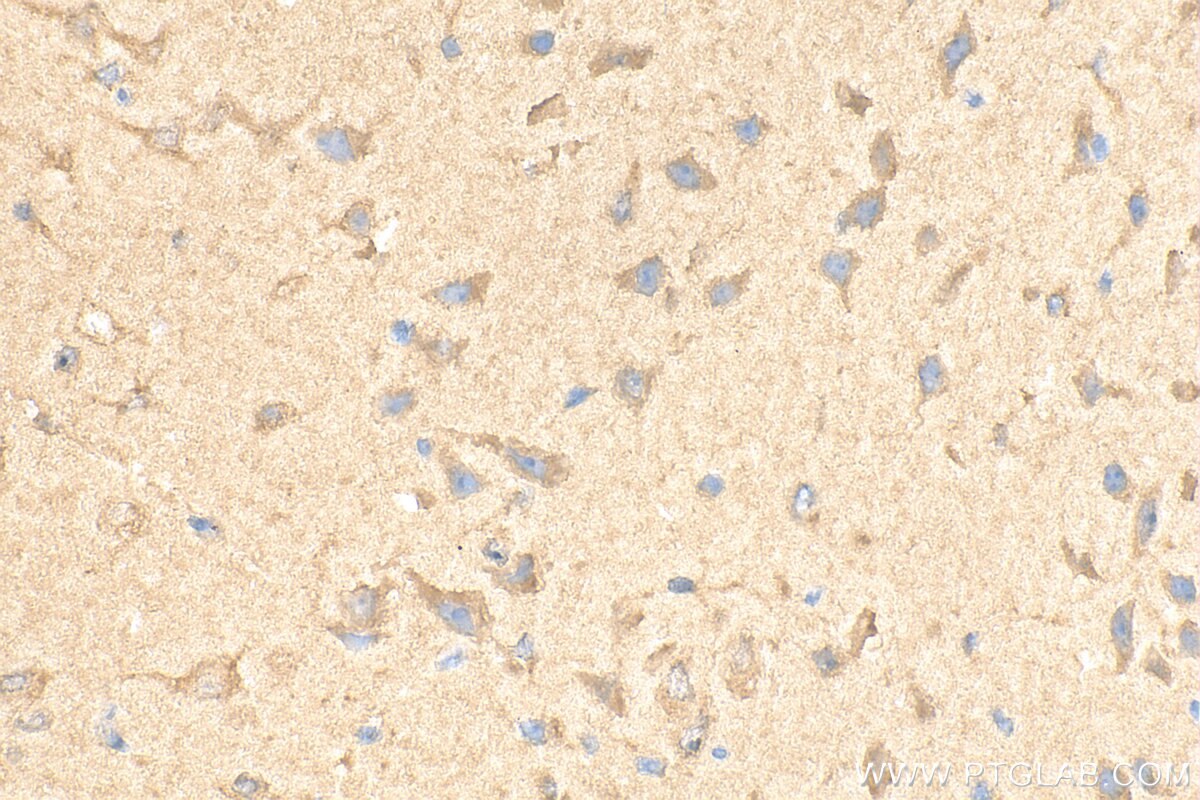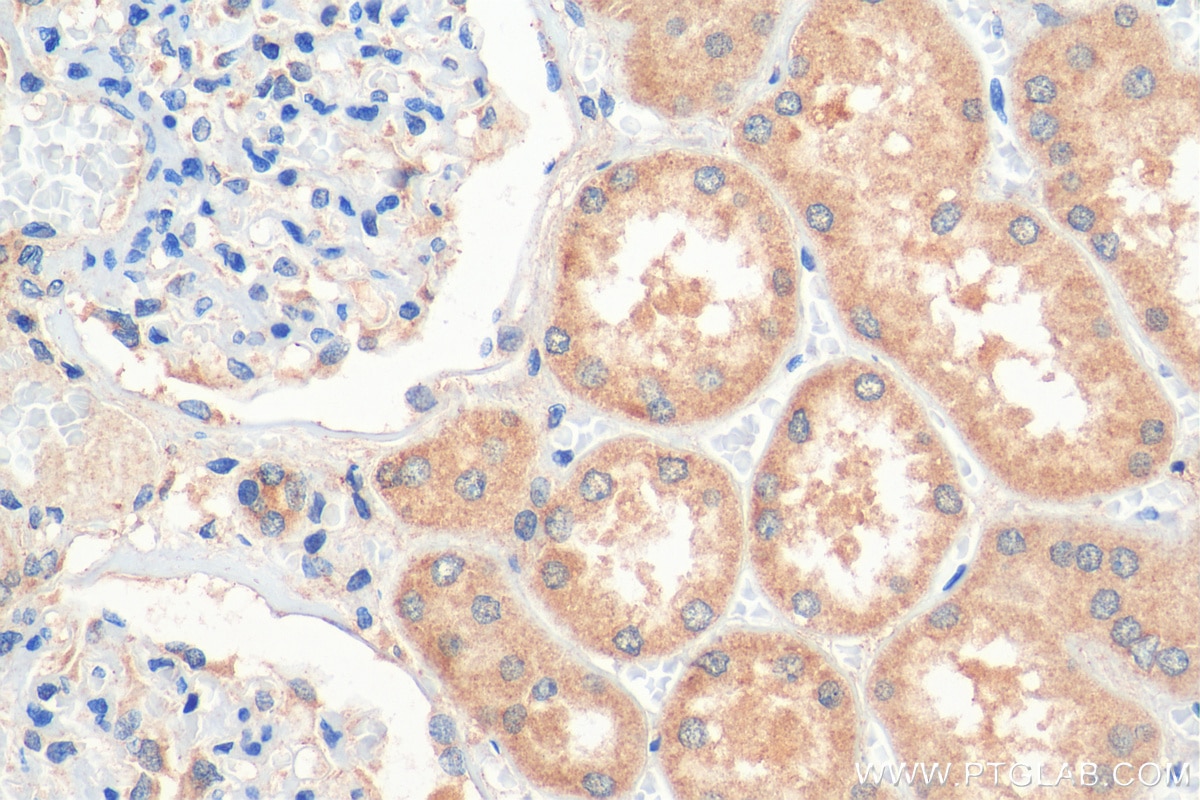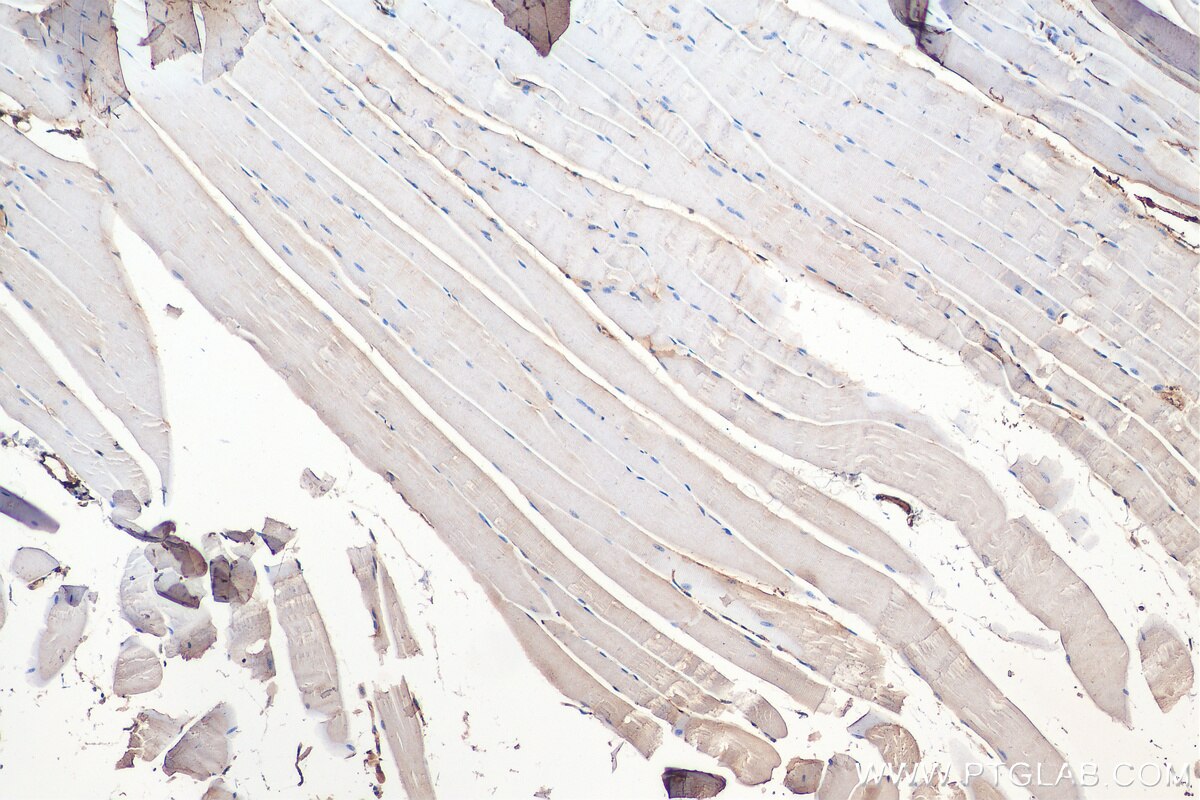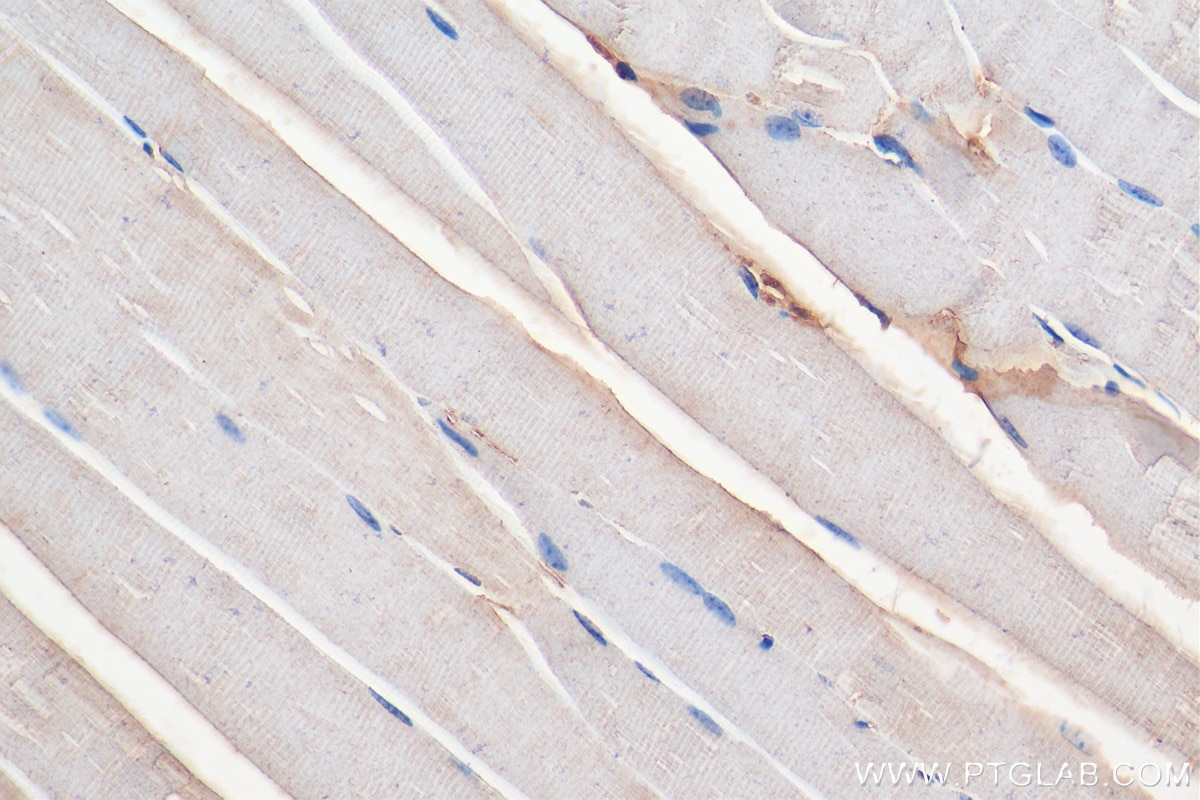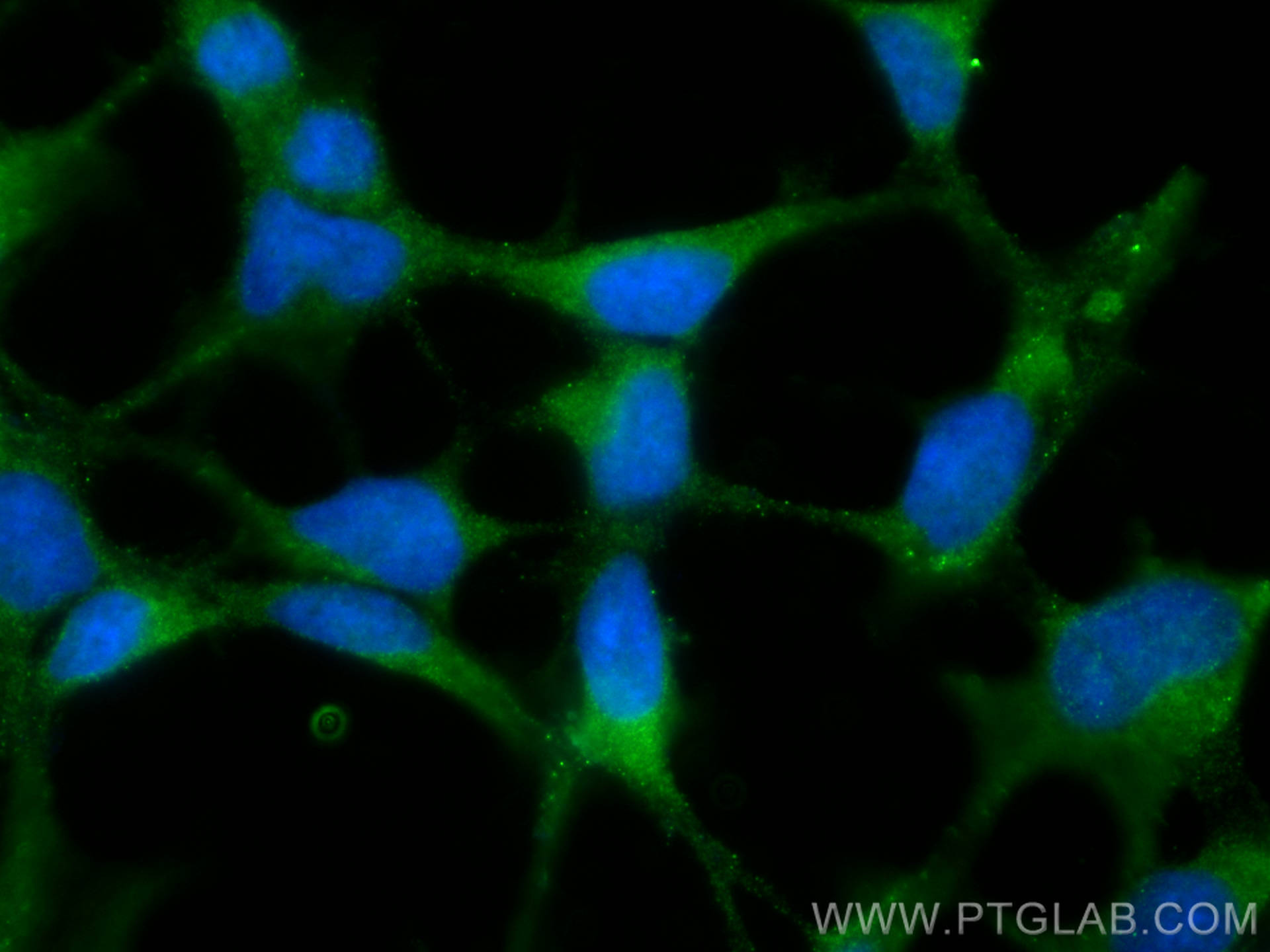- Featured Product
- KD/KO Validated
TRAPPC9, NIBP Polyklonaler Antikörper
TRAPPC9, NIBP Polyklonal Antikörper für WB, IHC, IF/ICC, IP, ELISA
Wirt / Isotyp
Kaninchen / IgG
Getestete Reaktivität
human, Maus, Ratte und mehr (1)
Anwendung
WB, IHC, IF/ICC, IP, CoIP, ELISA
Konjugation
Unkonjugiert
Kat-Nr. : 16014-1-AP
Synonyme
Geprüfte Anwendungen
| Erfolgreiche Detektion in WB | Maushirngewebe |
| Erfolgreiche IP | Maushirngewebe |
| Erfolgreiche Detektion in IHC | humanes Nierengewebe, Maushirngewebe, Maus-Skelettmuskelgewebe Hinweis: Antigendemaskierung mit TE-Puffer pH 9,0 empfohlen. (*) Wahlweise kann die Antigendemaskierung auch mit Citratpuffer pH 6,0 erfolgen. |
| Erfolgreiche Detektion in IF/ICC | HEK-293-Zellen |
Empfohlene Verdünnung
| Anwendung | Verdünnung |
|---|---|
| Western Blot (WB) | WB : 1:500-1:1000 |
| Immunpräzipitation (IP) | IP : 0.5-4.0 ug for 1.0-3.0 mg of total protein lysate |
| Immunhistochemie (IHC) | IHC : 1:50-1:500 |
| Immunfluoreszenz (IF)/ICC | IF/ICC : 1:50-1:500 |
| It is recommended that this reagent should be titrated in each testing system to obtain optimal results. | |
| Sample-dependent, check data in validation data gallery | |
Veröffentlichte Anwendungen
| KD/KO | See 3 publications below |
| WB | See 9 publications below |
| IHC | See 2 publications below |
| IF | See 6 publications below |
| IP | See 1 publications below |
| CoIP | See 1 publications below |
Produktinformation
16014-1-AP bindet in WB, IHC, IF/ICC, IP, CoIP, ELISA TRAPPC9, NIBP und zeigt Reaktivität mit human, Maus, Ratten
| Getestete Reaktivität | human, Maus, Ratte |
| In Publikationen genannte Reaktivität | human, Maus, Zebrafisch |
| Wirt / Isotyp | Kaninchen / IgG |
| Klonalität | Polyklonal |
| Typ | Antikörper |
| Immunogen | TRAPPC9, NIBP fusion protein Ag8791 |
| Vollständiger Name | trafficking protein particle complex 9 |
| Berechnetes Molekulargewicht | 139 kDa |
| Beobachtetes Molekulargewicht | 128-140 kDa |
| GenBank-Zugangsnummer | BC006206 |
| Gene symbol | NIBP/Trappc9 |
| Gene ID (NCBI) | 83696 |
| Konjugation | Unkonjugiert |
| Form | Liquid |
| Reinigungsmethode | Antigen-Affinitätsreinigung |
| Lagerungspuffer | PBS with 0.02% sodium azide and 50% glycerol |
| Lagerungsbedingungen | Bei -20°C lagern. Nach dem Versand ein Jahr lang stabil Aliquotieren ist bei -20oC Lagerung nicht notwendig. 20ul Größen enthalten 0,1% BSA. |
Hintergrundinformationen
TRAPPC9, also named KIAA1882 and NIBP, belongs to the NIBP family. It functions as an activator of NF-kappa-B through increased phosphorylation of the IKK complex. TRAPPC9 may function in neuronal cell differentiation and play a role in vesicular transport from the endoplasmic reticulum to the Golgi. TRAPPC9 was found in neurons of the cerebral cortex, hippocampus, and deep gray matter. Western blotting indicates the molecular weight of TRAPPC9 is 130-140 kDa, and 250 kDa may be detected with extensive posttranslational modification of TRAPPC9.
Protokolle
| PRODUKTSPEZIFISCHE PROTOKOLLE | |
|---|---|
| WB protocol for TRAPPC9, NIBP antibody 16014-1-AP | Protokoll herunterladen |
| IHC protocol for TRAPPC9, NIBP antibody 16014-1-AP | Protokoll herunterladenl |
| IF protocol for TRAPPC9, NIBP antibody 16014-1-AP | Protokoll herunterladen |
| IP protocol for TRAPPC9, NIBP antibody 16014-1-AP | Protokoll herunterladen |
| STANDARD-PROTOKOLLE | |
|---|---|
| Klicken Sie hier, um unsere Standardprotokolle anzuzeigen |
Publikationen
| Species | Application | Title |
|---|---|---|
Proc Natl Acad Sci U S A Primary cilia membrane assembly is initiated by Rab11 and transport protein particle II (TRAPPII) complex-dependent trafficking of Rabin8 to the centrosome. | ||
Int J Biol Sci Defective neurite elongation and branching in Nibp/Trappc9 deficient zebrafish and mice | ||
EMBO Rep TRAPPC1 is essential for the maintenance and differentiation of common myeloid progenitors in mice | ||
J Biol Chem The C7orf43/TRAPPC14 component links the TRAPPII complex to RABIN8 for preciliary vesicle tethering at the mother centriole during ciliogenesis.
| ||
Tumour Biol NIK- and IKKβ-binding protein promotes colon cancer metastasis by activating the classical NF-κB pathway and MMPs. |
